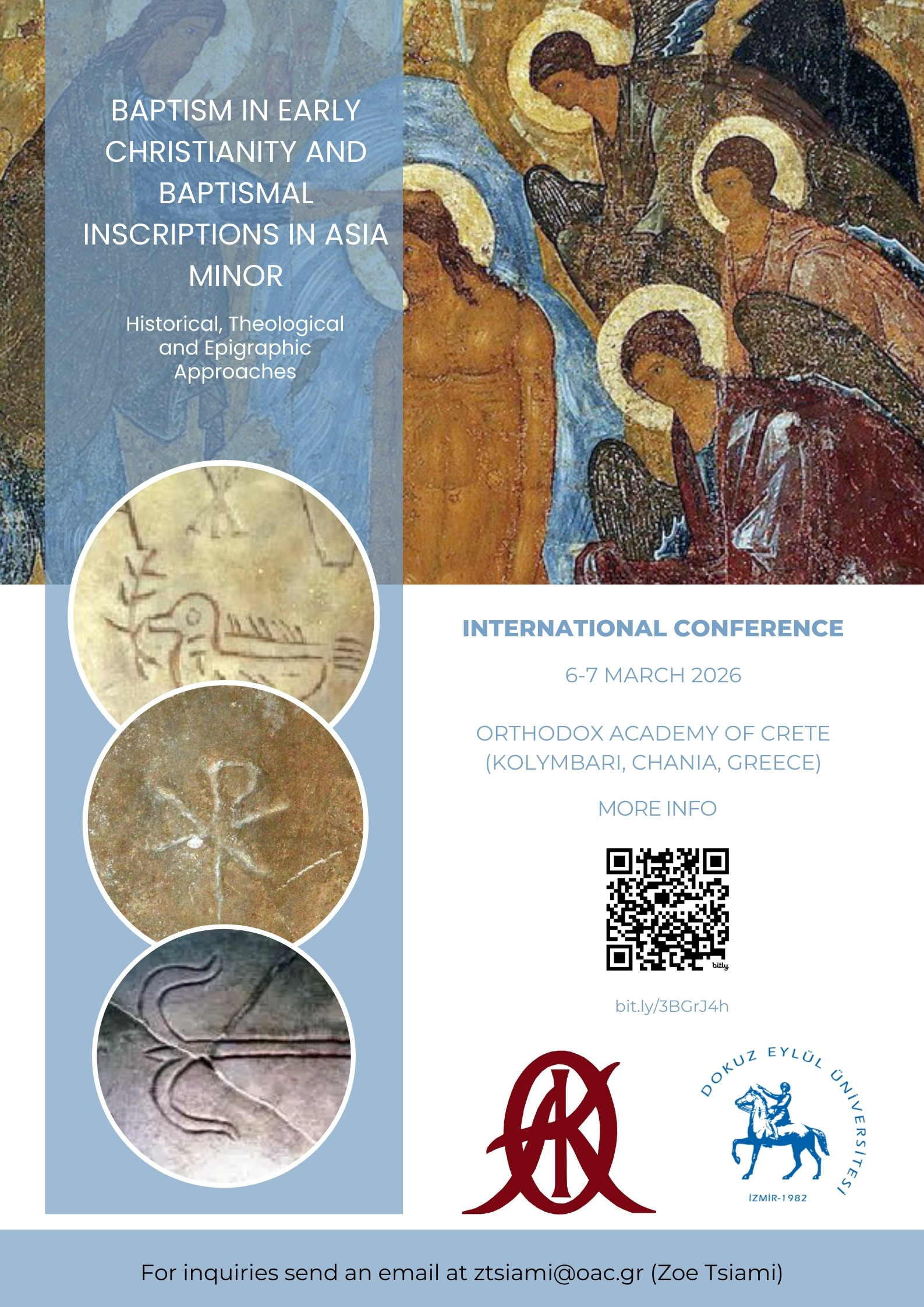
Sponsored by: Orthodox Academy of Crete
Call for Papers Deadline: October 1, 2025

Water has been the central element of Christian baptism since the very beginnings of Christianity. Baptism has been part of Christianity from the start, as shown by the many mentions in the Acts of the Apostles and the Pauline epistles. Baptism with water, whether by immersion or sprinkling, has always been the primary initiation ritual for Christians. But where did this ritual come from? And what did it mean? Although the term “baptism” is not today used to describe Jewish rituals(in contrast to New Testament times, when the Greek word βαπτισμός did indicate Jewish ablutions or rites of purification), the purification rites (or ֶוה ְק ִמ / מקווה; mikvah—ritual immersion) in Jewish law and tradition are similar to baptism, and the two have been linked. This e-meeting will focus on the following questions related to baptism in Early Christianity: how did people practice and understand baptism in Early Christian Minor, what kind of connotations did the baptismal use of water evoke in the Asian context, and what significance did baptism gain during the first centuries A.D.? Baptism seems to have been developed in the early years in close contact with the local religious context and the construction of baptisteries in the sixth century A.D. adapted local pagan elements of architecture. The Early Christian baptisteries featured water as the central element of baptism in an architecturally, ritually, and theologically reflected way.
In the study of baptism in Early Christian Asia Minor, we will especially focus on epigraphic evidence, which has been overlooked, whereas there is still a huge amount of material from excavations and museums in Turkey. Our aim is also to analyze the subject with literary sources and archaeological evidence to reconstruct the liturgy and the actions of early Christians, especially in ancient Anatolia. In this e-meeting, we only focus on baptismal inscriptions in Asia Minor between the fourth and sixth centuries A.D. and attempt to set out a comprehensive model for the study of Early Christian baptism in Asia Minor. It is also our intention to create a complete bibliography of previous publications on Early Christian baptism and baptismal inscriptions in Asia Minor.
We warmly invite contributions by scholars and graduate students from a variety of disciplines related to this subject. Intended to bring together scholars of Early Christian theology, Roman history, and Greek epigraphy to discuss a range of issues concerning this ritual’s characteristics, this video conference should be an excellent opportunity to increase our knowledge about this subject. The following theme groups are the main questions of the symposium, which are prescriptive:
-The origins and development of baptism in Asia Minor,
-Relevance and performance of baptism in Early Christian contexts in Asia Minor,
-Early Christian baptismal inscriptions in Asia Minor from archaeological field projects and museums,
-Etymology of Early Christian baptism,
-Ancient Greek and Latin textual sources on Early Christian baptism in Asia Minor,
-Hellenistic and Roman gravestones and other iconographic media depicting Early Christian baptism and baptismal inscriptions in Asia Minor,
-Miscellanea.
On these themes and questions, all approaches and methods susceptible to bringing some progress to our current knowledge are, of course, welcome: theology, ancient history, epigraphy, archaeology, history of art, cultural anthropology, etc. All the readings and discussions in our conference will be in English, and recorded for later viewing as a podcast on YouTube. The proceedings of the symposium will be published in 2028-29.
We would be delighted if you could consider contributing to our symposium and contact us with the required information below before October 1, 2025. Our e-mail addresses are: ztsiami@oac.gr and/or terracottas@deu.edu.tr
For all your queries concerning the symposium, our phone number is: +90.544.938 54 64. The organizers seek to widen participation at this symposium and would like to encourage colleagues from all parts of the world to attend. We kindly request that you alert any interested researchers, colleagues, and students within your research community who would be interested in participating in this conference, either by forwarding our first circular and poster through Academia, Researchgate, Facebook, Twitter, Instagram, or other similar social media, or by printing them and displaying in your institution. Please share them also on your ListServs. We hope that you will be able to join us at the Orthodox Academy, and we look forward to seeing you!
Notifications